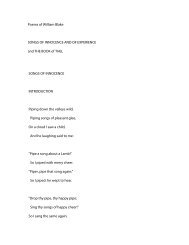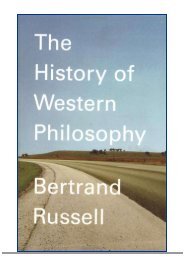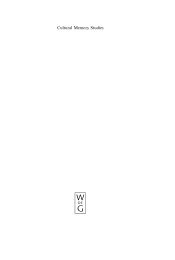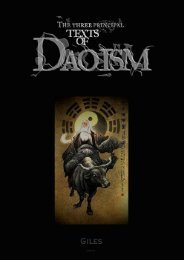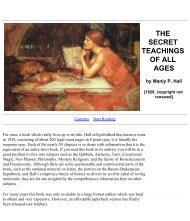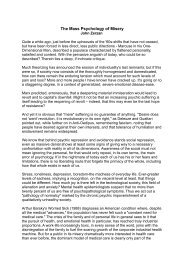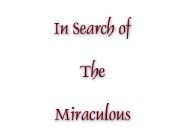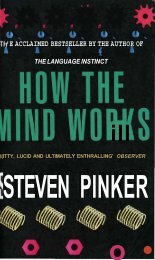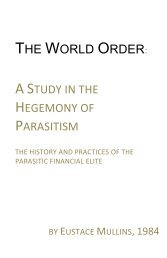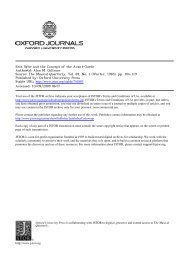The Ever-Present Origin - Michael Goodnight - Editor
The Ever-Present Origin - Michael Goodnight - Editor
The Ever-Present Origin - Michael Goodnight - Editor
- No tags were found...
You also want an ePaper? Increase the reach of your titles
YUMPU automatically turns print PDFs into web optimized ePapers that Google loves.
proportion to the discrepancy between our previous estimation of time andits actual and enduring efficacy. But this discrepancy is so pronouncedthat we can one gradually realize that time means more than clock time.Time first irrupted into our consciousness as a reality or world constituentwith Einstein's formulation of the four-dimensional space-time continuum,that is to say at the beginning of the present century. Consciously orunconsciously the time question has played a principle role in the naturalsciences ever since. As a consequence of the new scientific theories, itsinterpretation and estimation have undergone an almost unnoticeable, butgradual year-by-year modification. Some references may shed light on thisparticularly noteworthy and fundamental state of affairs; these referenceswill also provide a brief preliminary orientation on the subject that will beexplored in detail in the course of the following chapters.Prior to the exposition of the relativity theory, which is unthinkable without.the time component, Planck advanced his quantum theory. <strong>The</strong> result wasthat linear continuity and the succession of temporal events wereabandoned in favor of individual temporal impulses. This was followed byN. Bohr and the wave mechanics of de Broglie and Schrödinger, whichgave validity to the principle of complementarity. According to theprinciple of complementarity, both matter and light are to be understoodas being corpuscle as well as wave. <strong>The</strong>y become visible in a sense bothas a spatial magnitude, as it were, and as a temporal element.In biology, the mutational theory of de Vries implicitly demonstrates timeas an intensity; and mutation theory, together with quantum theory, wavemechanics, and the theory of relativity, form the four cornerstones of ourpresent-day natural sciences. In addition, psychoanalysis makes it possiblefor us to speak today of a time phenomenon that could be called timecondensation,which occurs in psychic events and is manifest, forexample, in dreams. And finally, technology outdoes itself from year toyear in shrinking space by mastering time and temporally condensinggreat distances, either by supersonic aircraft or by narrowing them towardthe temporal zero-point via radio and television.We meet up with this same preoccupation in art: the introduction of timein painting destroys the pictorial content or—admittedly less frequently—shapes it according to different laws, as in the work of Juan Gris, Braque,and Picasso. And leaving aside other disciplines like philosophy, we canobserve in poetry how the scenes and acts unfold in the plays of ThorntonWilder and Ferdinand Bruckner in utter disregard of clock time, creatingexpressive possibilities for truly "fourdimensional" time. In all of theseexamples time-freedom has already come into view.<strong>The</strong> completely novel foundations of the new theories in science and of themeans of expression in the arts rest on the inclusion of the time factor intothe rigid, materialistic, and spatially conceived systems prevalent until1900. Yet the incorporation of time into our reality is far from complete;even today there are far-reaching attempts being made toward67



